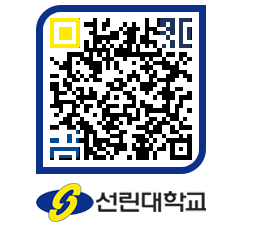Upper limb tension test
- 날짜
- 2014.12.09
- 조회수
- 238
- 이혜란
- 분류 : 기타
출처: http://www.physio-pedia.com/Upper_Limb_Tension_Test
Upper Limb Tension Test
Introduction
The upper limb tension tests are also known as Brachial Plexus Tension or Elvey Test.[1]These tests are designed to put stress on neurological strutures of upper limb. These tests were first described by Elvey[2] and hence also known as Elvey test but most commanaly called as Upper limb tension test or ULTT. The shoulder,elbow, forearm,wrist and fingers are kept in specific position to put stress on particular nerve (nerve bias)[3] and further modification in position of each joint is done as "sensitizer". ULTT are equivalent to the straingh leg raise designed for lumber spine.
Purpose
These tension test are performed to check the peripheral nerve compression or as a part of neurodynamic assesment. The main reason for ULTT is to check cervical radiculopathy. These test are both diagnostic and therapeutic. Once the diagnose of cervical radiculopathy is made the test are done to mobilise the entraped nerve.
Types
The test is divided into 4 types and examine the different nerve.[1]
ULTT 1 for Median nerve, anterior interosseous nerve(C5,C6,C7).
ULTT 2 for Median nerve, musculocuteneous nerve, axillary nerve.
ULTT 3 for Radial nerve.
ULTT 4 for Ulnar nerve, C8,T1 nerve root.
Each test is done on normal side first. The order for positioning the joint first is shoulder followed by forearm, wrist, fingers and last by elbow. Each sensitizer is added until the pain is provoked or produced. To further sensitize the test side flexion of cervical spine can be added[4]. If the pain comes in the very intial position then no need to add further senitizers.
If pain or sensations of tingling or numbness are experienced at any stage during the positioning into the test position or during addition of sensitization maneuvers, particularly reproduction of neck, shoulder or arm symptoms , the test is positive; this confirms a degree of mechanical interference affecting neural structures.
All test are done in supine lying and while applying the shoulder depression it should be maintained even while applying shoulder abduction.
ULTT 1: for Median nerve, anterior interosseous nerve
| Shoulder | Depression and abduction (110 degree) |
| Elbow | Extension |
| Forearm | Supination |
| Wrist | Extension |
| Fingers and thumb | Extension |
| Cervial spine | Contralateral side flexion |
'ULTT 2': 'Median nerve, musculocutaneous nerve, axillary nerve
| Shoulder | Depression and abduction (10 degree) |
| Elbow | Extension |
| Forearm | Supination |
| Wrist | Extension |
| Fingers and thumb | Extension |
| Shoulder | Lateral rotation |
| Cervial spine | Contralateral side flexion |
ULTT 3:Radial nerve
| Shoulder | Depression and abduction (10 degree) |
| Elbow | Extension |
| Forearm | Pronation |
| Wrist | Flexion and ulnar deviation |
| Fingers and thumb | Flexion |
| Shoulder | Medial rotation |
| Cervical spine | Contralateral side flexion |
<object width="425" height="350" style="color: rgb(0, 0, 0); font-family: verdana, sans-serif; line-height: 15px;"><embed src="http://www.youtube.com/v/kODPvHYNvlU" type="application/x-shockwave-flash" wmode="transparent" width="425" height="350"></object>
ULTT 4: Ulnar nerve
| Shoulder | Depression and abduction (10-90 degree) hand to ear |
| Elbow | Flexion |
| Forearm | Supination |
| Wrist | Extension and radial deviation |
| Fingers and thumb | Extension |
| Shoulder | Lateral rotation |
| Cervical spine | Contralateral side flexion |
<object width="425" height="350" style="color: rgb(0, 0, 0); font-family: verdana, sans-serif; line-height: 15px;"><embed src="http://www.youtube.com/v/BCfWimhcvhY" type="application/x-shockwave-flash" wmode="transparent" width="425" height="350"></object>
BIKELE'S SIGN: Discovered by Evans[5]. In seated position the patient abducts the shoulder at 90 degree with elbow fully flexed. Extend the arm at shoulder level and then extend the elbow. If radicular pain results the test is positive.
Reliability and validity
The reliability and validity is different for different test which can be seen here.
